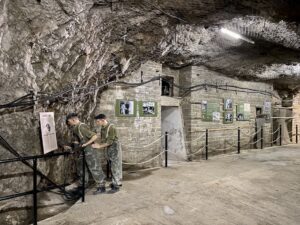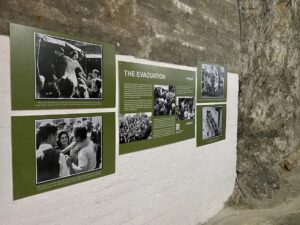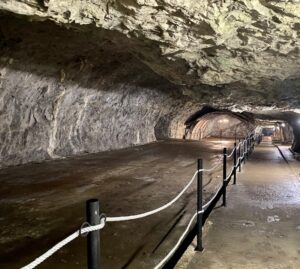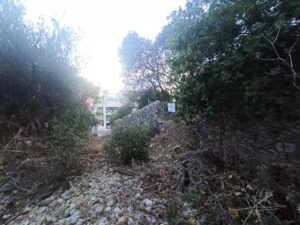 One of Gibraltar’s most popular historical attractions has re-opened after an extensive refurbishment. The World War II tunnels at Hays Level are now once again open daily, after being closed since earlier in the year to allow a series of essential works to be undertaken, including the removal of redundant cables, roof stabilisation and new interpretation panels.
One of Gibraltar’s most popular historical attractions has re-opened after an extensive refurbishment. The World War II tunnels at Hays Level are now once again open daily, after being closed since earlier in the year to allow a series of essential works to be undertaken, including the removal of redundant cables, roof stabilisation and new interpretation panels.
Located within the nature reserve on the Upper Rock, this segment of tunnels forms part of the network hewn out of the Rock during World War II. It is one of the major attractions that can be enjoyed within the reserve by both visitors and residents, “displaying the monumental efforts that took place in Gibraltar during the war years”.
 Welcoming the re-opening, minister for the environment and heritage John Cortes said, “I am really pleased that we are once again able to visit these historic tunnels, after much-needed improvement works. I urge everyone who can to visit and to get to know this site and the other attractions within the reserve, just one of the many natural and historical features of our unique homeland that we can enjoy.”
Welcoming the re-opening, minister for the environment and heritage John Cortes said, “I am really pleased that we are once again able to visit these historic tunnels, after much-needed improvement works. I urge everyone who can to visit and to get to know this site and the other attractions within the reserve, just one of the many natural and historical features of our unique homeland that we can enjoy.”
 Another historical landmark in Gibraltar, O’Hara’s Battery, re-opened in June after also undergoing maintenance and restoration work.
Another historical landmark in Gibraltar, O’Hara’s Battery, re-opened in June after also undergoing maintenance and restoration work.
New Scheduled Archaeological Area
The Gibraltar government has also just announced that the area east of Arengo’s Gardens and Arengo’s Palace car park, including the walls on its northern, southern and eastern perimeters, is now a “Scheduled Archaeological Area”, the first to be formally established in Gibraltar after similar protection was afforded to the Gorham’s World Heritage site.

Its new status was declared pending investigation by the National Museum following indications that there may be important remains in the area. As such, any disturbance of the ground, excavation or removal of any object or antiquity from the scheduled archaeological area without having “scheduled archaeological area consent” is not permitted.
“It is another very important milestone in the protection of our heritage,” said John Cortes. “We now have our first scheduled archaeological area, an area that deserves protection due to its rich material culture, and I am looking forward to seeing the work undertaken by our heritage specialists and what they will uncover.”
